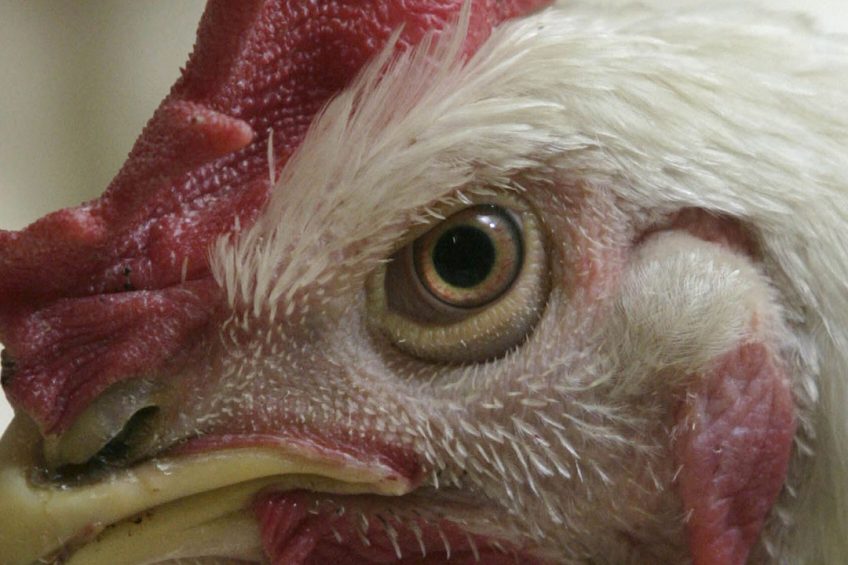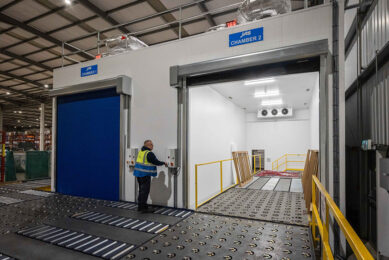Enlighten yourself with poultry lighting

By understanding similarities and differences between human and poultry vision, we can begin to appreciate the effects of how poor light installation, and lighting components which are not compatible with each other, can have detrimental effects on bird behaviour and potential reproductive performance. It should also be noted that by understanding the differences in human and poultry vision, measuring light intensity can be done more reliably by using the correct equipment.
Light is an important aspect for human, plant and poultry survival. For animals, the circadian rhythm is facilitated by patterns in light intensity, but the perception of light between humans and poultry differs. Specific wavelengths of light can penetrate the skull of poultry, and influence the pineal gland and subsequent hormone production. This is coupled with an additional cone cell type in the retina of the eye that can translate ultraviolet (UV) light, or light with wavelengths less than 400 nanometres (nm). Humans possess three cone cells (red, green and blue) as opposed to four in the retina of the poultry eye. It is this difference in cells that explains a wider range of wavelengths that can be seen by poultry, as shown in the images below.
Poultry use UV light to identify other birds in the flock by the different barring on their feathers; this is undetectable to the human eye.
The influence of bulb type and flicker
Poultry are more sensitive to flicker than humans. Light bulb flicker can cause potential issues for poultry because birds try to adapt to the changing light levels, adding stress to the eye muscles and brain, ultimately creating distress for the birds.
There is a misconception that only certain light types produce flicker, however, all lights that operate from an alternating current produce flicker. The main difference is that filament bulbs have electrical current passing through the wire, causing the filament to heat up and glow hot, producing light. It is this residual heat that regulates a more constant light output, making flicker undetectable to the human eye – a seemingly positive side of the bulbs inefficiency. On the other hand, LED lights do not heat up and do not produce residual heat to help buffer the effect of the alternating current. In Figure 1, for instance, the flicker is percieved each time the alterating current passes across the x axis.
Figure 1 – AC current.

This can be managed by the incorporation of the correct and compatible component parts, including the dimmer, built-in driver, and control panels. For example, the dimmer used for a filament bulb will not be compatible with an LED bulb for the reasons outlined above in terms of residual heat.
When designing a new poultry house or preparing an established one for a new flock, the compatibility of lighting components is critical for investment decisions, as well as bird management and welfare. It is important to consider the distance between light units to avoid shadows, which can potentially lead to birds clustering and adding increased pressure to feeder and drinker space. The correct beam angle for light sources is between 130o and 170o; this reduces spotlight effect and illuminating the ceiling of the house.
Correct equipment for measuring light intensity
It is essential with increased investment into more energy efficient systems that the correct equipment is used to accurately assess light intensity in the poultry houses. Standard light meters, which have been used reliably with older systems such as tungsten bulbs, measure the brightness of an area (lumens per m2), as perceived by the human eye. This is based on the tungsten filament bulb, but does not include wavelengths in the blue and red spectrum, or capture the full spectrum of the LED bulb. For houses with LED lights, a LED light meter must be used, and a different calculation applied to determine the actual light intensity. Many of these meters have the capability to also measure filament bulbs during the transition to a more efficient system.
Conclusion
Poultry are able to see a much wider range of wavelengths in the electromagnetic spectrum and have a higher sensitivity to flicker than humans. By understanding both of these factors, we can minimise bird distress when making lighting investments through compatibility of the components installed, as well as accurately measuring the light intensity with the correct equipment.






